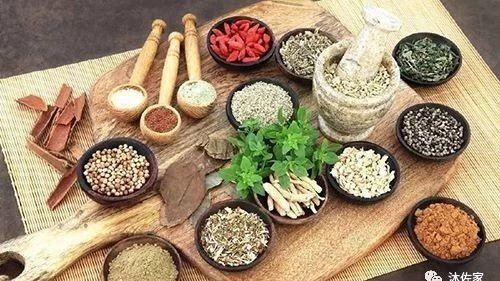Hello everyone, I am Bao Yanju. Today, I will continue to share with you about the deep pulse (沉脉, chén mài). Previously, we discussed some characteristics of the deep pulse, its corresponding locations, clinical manifestations, and some prescriptions for related conditions. Now, I will further explain the clinical applications of the deep pulse.
When the pulse is deep in all three positions (cun, guan, chi), especially the guan position, it often indicates a deficiency of the spleen and stomach, and there is often phlegm-dampness retained internally. At this time, one can refer to the patient’s tongue quality and coating to assess the severity of dampness and any signs of heat transformation.Ping Wei San (平胃散, Ping Wei Powder) and Hou Po Sheng Jiang Ban Xia Gan Cao Ren Shen Tang (厚朴生姜半夏甘草人参汤, Magnolia Bark, Ginger, Pinellia, Licorice, and Ginseng Decoction) are basic formulas for treating spleen and stomach deficiency with internal phlegm-dampness. As long as the patient presents with primary complaints related to spleen and stomach issues, these formulas can be adjusted and applied.
The deep pulse indicates internal issues, often associated with water retention. The location of lower back pain corresponds to the lower jiao (下焦, xià jiāo), and the deep pulse often manifests as a chi pulse. If the patient experiences lower back pain along with discomfort in the back, and the chi pulse is deep, one can also use Ge Gen Tang (葛根汤, Kudzu Decoction) with modifications. In the “Shang Han Lun” (伤寒论, Treatise on Cold Damage), there are two entries regarding Ge Gen Tang: the 31st entry states, “In Taiyang disease, with stiffness in the neck and back, and aversion to cold and wind, Ge Gen Tang is the main treatment.” The 32nd entry states, “When Taiyang and Yangming diseases combine, there will definitely be diarrhea, Ge Gen Tang is the main treatment.” The text does not explicitly mention the specific pulse pattern for Ge Gen Tang, but through herbal analysis, the pulse pattern for Ge Gen Tang should be a floating pulse, indicating a Taiyin disease. However, if there is water retention in the body, the pulse pattern is often deep, indicating a Shaoyin disease. At this time, one can add diuretic herbs such as Fu Ling (茯苓, Poria), Cang Zhu (苍术, Atractylodes), and Fu Zi (附子, Aconite) to the formula.
Clinically, if there is muscle stiffness, rigidity, or discomfort in the lower back, one can consider using Ge Gen Tang. Ge Gen has the effect of relieving muscle tension and alleviating stiffness in the tendons, especially effective for relieving stiffness in the neck and back, hence it is stated in the “Shen Nong Ben Cao Jing” (神农本草经, Divine Farmer’s Materia Medica) that Ge Gen treats “all types of bi syndromes” (诸痹, zhū bì).
When the chi pulse is deep, it indicates that cold-dampness has descended and accumulated in the lower back area, leading to lower back pain and a sensation of coldness in the lower back. Sometimes, the buttocks and lower limbs may also feel cold. For women, there may be an increase in vaginal discharge, resembling water, while for men, the scrotal area may feel damp and cold. In such cases, one can use Shen Zhuo Tang (肾着汤, Kidney Retention Decoction). The lower back pain from Shen Zhuo Tang is an internal condition manifesting outwardly; superficially, there may be no pain, but there is a sensation of emptiness and coldness internally. Therefore, the main symptom of Shen Zhuo Tang is lower back pain, with the sensation as if the lower body is sitting in water, and the pain feels as if one is sitting in water, heavy as if carrying five thousand coins.
In the “Jin Gui Yao Lue” (金匮要略, Essential Prescriptions from the Golden Cabinet), section 16 states: “In the case of Kidney Retention disease, the person feels heavy, with cold in the lower back, as if sitting in water, the body appears water-like, and there is no thirst, urination is spontaneous, and appetite remains normal. The disease belongs to the lower jiao, with fatigue and sweating, and clothing feels cold and damp. If this condition persists, there will be cold pain below the waist, and the abdomen feels heavy as if carrying five thousand coins; Gan Jiang Ling Zhu Tang (甘姜苓术汤, Sweet Ginger, Poria, and Atractylodes Decoction) is the main treatment.”
A 25-year-old woman presented with lower back pain, sensitivity to cold in the lower back, and a constant feeling as if her lower back was exposed to the wind. She also had a moist mouth and increased vaginal discharge, with a pale tongue and thin white coating, and a deep slippery pulse. This was considered a case of Kidney Retention due to descending cold-dampness. After treating with the original formula of Shen Zhuo Tang for a week, her lower back pain completely disappeared. The later formula Xiao Yao San (逍遥散, Free and Easy Wanderer Powder) may have been developed based on Shen Zhuo Tang, adding Dang Gui (当归, Angelica), Bai Shao (白芍, White Peony), Chai Hu (柴胡, Bupleurum), and Bo He (薄荷, Mint). If female patients experience not only lower back pain but also emotional distress, menstrual irregularities, fatigue, and insomnia, Xiao Yao San can be added.
Today, I continued to share the characteristics of the deep pulse. Combined with previous discussions, everyone can have a more complete understanding of the characteristics of the deep pulse.
Thank you all for listening today.

